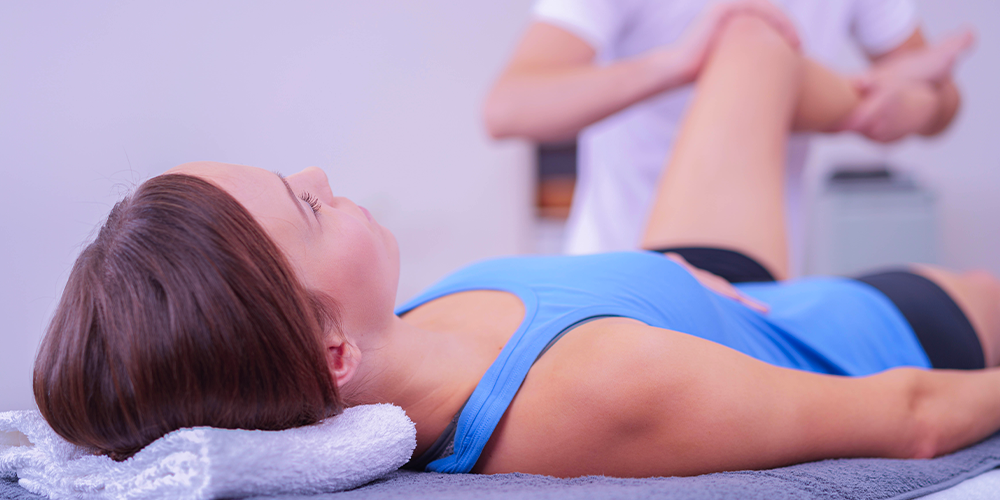Muscle cramps are painful and often result from muscle overloading or dehydration. However, you can take measures to prevent and relieve these symptoms. Learn how to prevent muscle cramps and stay symptom-free.

Author
Dr. med. Corinne Weil, Deputy Head of Sports Medicine, General Internal Medicine FMH, Sports Medicine SEMS, Medbase Zurich Löwenstrasse
What happens during a muscle cramp?
A muscle cramp is a sudden, painful, and involuntary contraction of a muscle or group of muscles. This condition can last for a few seconds to minutes and is often accompanied by visible deformation or hardening of the affected muscle. Muscle cramps commonly occur in the calves, feet, and thighs, leading to significant discomfort
Why do muscle cramps occur?
Muscle cramps can have various causes. One common trigger is overloading the muscles through intense physical activity or prolonged standing, particularly affecting athletes, individuals with low fitness, or older adults. Dehydration resulting from inadequate fluid intake during exercise or electrolyte imbalances can also lead to muscle cramps. Furthermore, conditions such as diabetes, thyroid disease, or kidney problems may also contribute to muscle cramps.
What prevents muscle cramps?
There are several things you can do to prevent muscle cramps and relieve their symptoms:
- Stay hydrated: Make sure you drink enough water, especially during exercise or in hot temperatures. This will prevent dehydration, which can lead to muscle cramps.
- Balance electrolytes: Get enough electrolytes such as sodium, potassium and magnesium, either through a balanced diet or by consuming electrolyte-rich drinks or supplements. Electrolytes play an important role in muscle contraction and can counteract cramps.
- Stretching exercises: Regular stretching of the affected muscles, especially before and after exercise, can prevent muscle cramps. Focus on stretching exercises for the calves, feet and thigh muscles.
- Heat and relaxation: Apply warm compresses to the affected muscles or take a warm bath to improve circulation and promote muscle relaxation.
- Massage and self-treatment: Gently massage the affected muscles to relieve tension. Use slow, circular movements and apply light pressure when needed. You can also try self-massage techniques like using a fascia roller.
- Rest and recovery: Allow your muscles sufficient time to recover, especially after intense exercise. Ensure adequate sleep and avoid overloading the affected muscles.
Performance diagnostics at Medbase
The sports scientists and sports physicians at Medbase check your performance level with an endurance test. Based on this, they explain to you in a clear and uncomplicated way how you can optimally incorporate the results into your training.
Book now
When should you consult a doctor?
In most cases, muscle cramps are harmless and go away on their own. However, if the cramps are frequent, extremely painful, accompanied by other symptoms, or persist for more than a few minutes, you should consult a doctor. This way, possible underlying medical problems can be ruled out or further investigations or treatment can be carried out if necessary.
WHO IS MEDBASE?
Medbase is the largest multidisciplinary sports medicine network in Switzerland and provides specialised sports medicine services for athletes, clubs and sports federations of all activity levels in the areas of sports medicine, sports physiotherapy, performance diagnostics and training advice.

